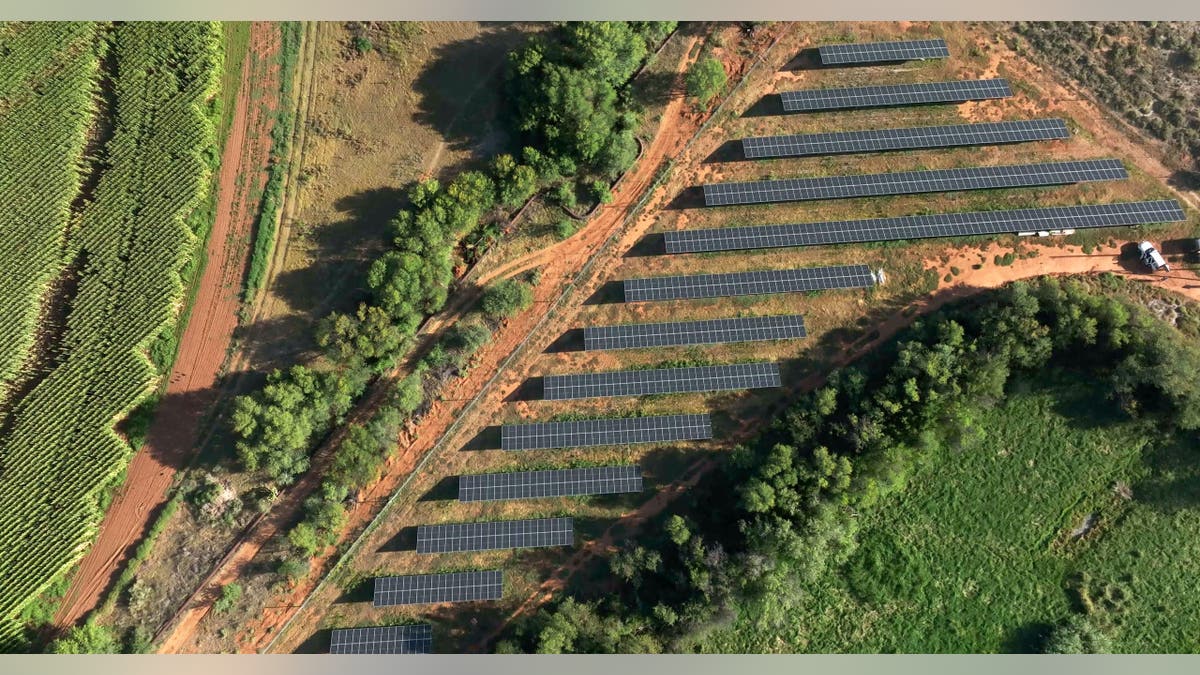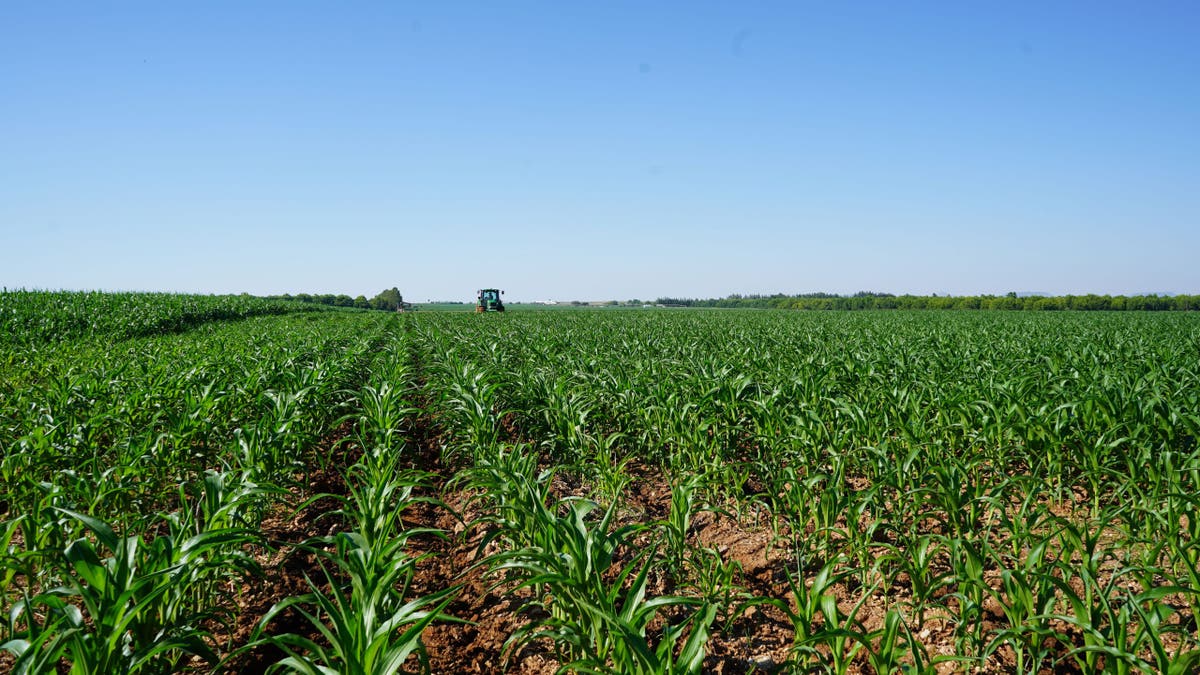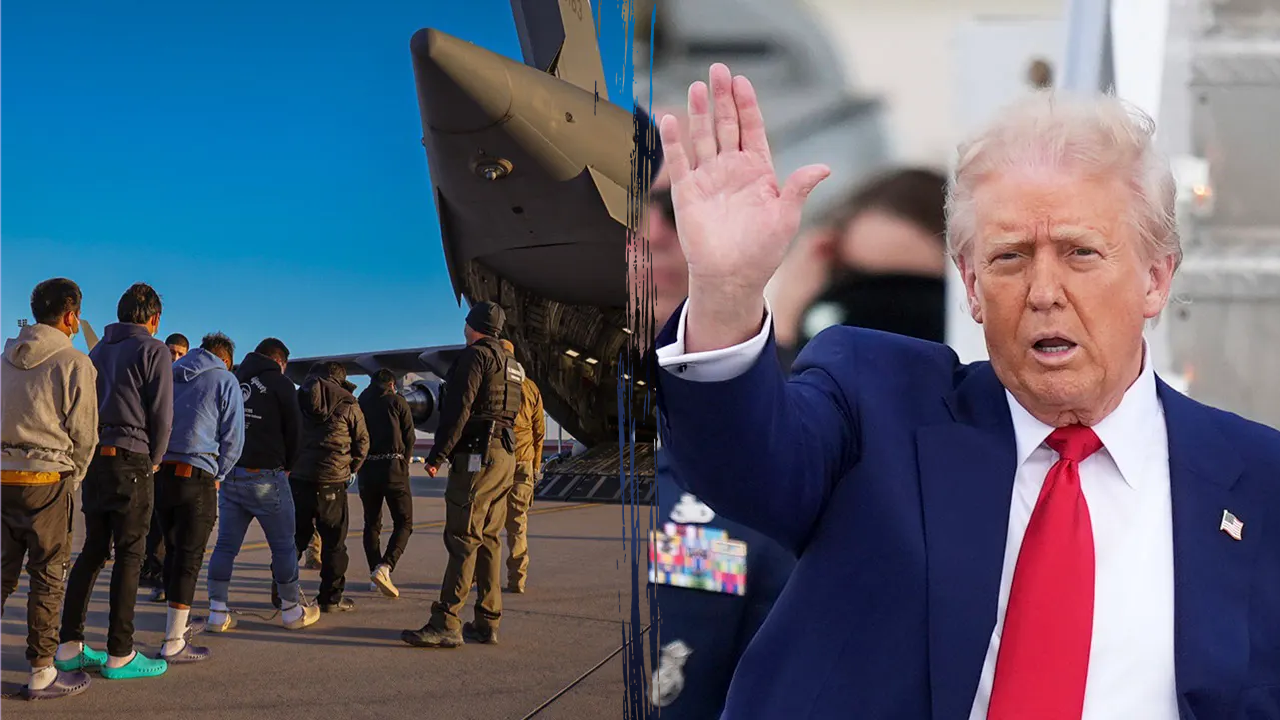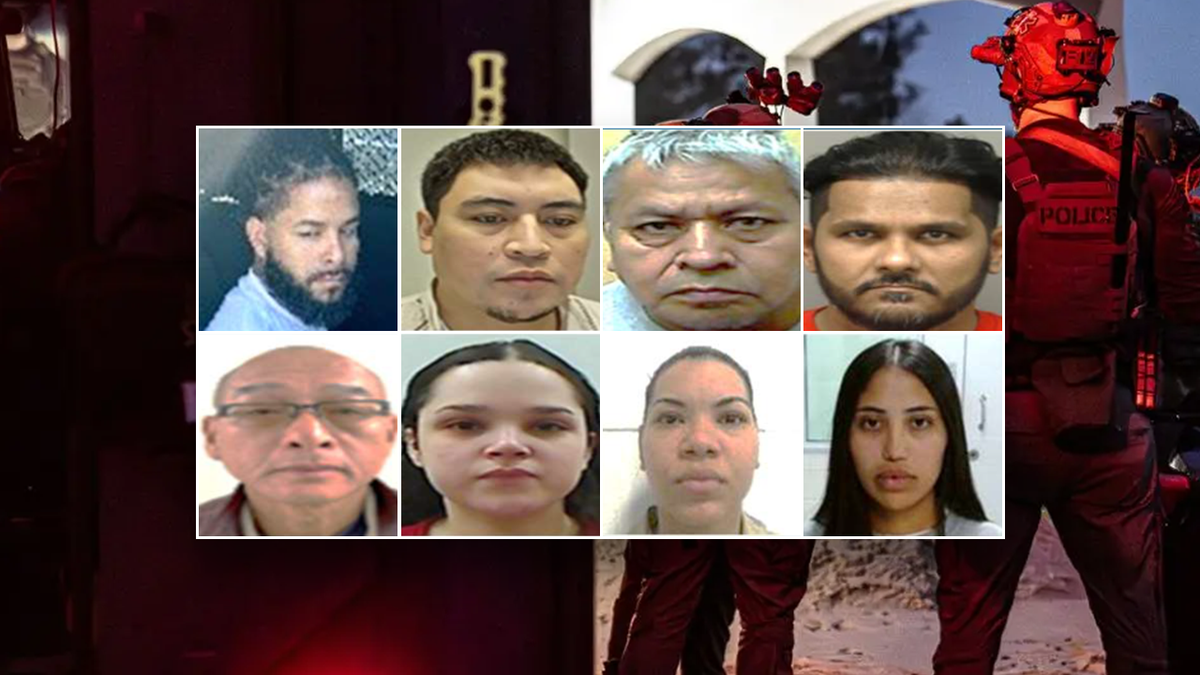INTERNACIONAL
Trump admin makes new move to bring South African refugees to US as president blasts nation’s rulers again

Orania seeks US recognition
With a growing population of 3,000 people Orania is seeking U.S. support to become a fully autonomous area in South Africa. (Video courtesy: Orania Movement.)
FIRST ON FOX: The U.S. and South African groups have started to take action to «improve» the lives of Afrikaners, descendants of white, mostly Dutch settlers, after President Donald Trump said they could settle in the U.S. as refugees.
On Friday, President Trump lashed out again against the South African government for its treatment of farmers, many, but not all of whom, are Afrikaners, positing on his Truth Social media platform via X, «they are taking the land of white Farmers, and then killing them and their families.»
The State Department told Fox News Digital about new moves it is making. At the same time, the Afrikaner Orania Movement, an Afrikaner settlement, has stated its desire to be treated by the U.S. as a state within a state in South Africa.
TRUMP FREEZES AID TO SOUTH AFRICA, PROMOTES RESETTLEMENT OF REFUGEES FACING RACE DISCRIMINATION
This has led to often heated discussions about Afrikaners, and, up until now, no details from the U.S. side. But now there’s real movement, not just talk, taking place.
«The U.S. Embassy in Pretoria (South Africa) is reviewing inquiries from individuals who have expressed interest to the Embassy in refugee resettlement to the United States and has begun reaching out to some individuals to schedule and conduct informational interviews,» the State Department told Fox News Digital.
According to the nongovernmental South African Chamber of Commerce in the U.S., as of last month, 67,042 South Africans have expressed interest in the refugee offer, but the State Department told Fox News digital, «We do not have anything to share on numbers of participants at this stage of the process.»
There’s also been a flurry of flights across the Atlantic to Washington by groups looking to get the White House’s, and ultimately the president’s, attention.
First was the political group AfriForum, widely credited with alerting President Trump to the need for «humanitarian relief» for Afrikaners.
Among other organizations making the trek to D.C. was the Cape Independence Advocacy Group, which says Cape Town and some of the surrounding areas should become a state separate from the rest of South Africa.
But perhaps the Orania Movement’s trip to Washington, and its request for U.S. help, is of most interest.
«Help us Here,» is the slogan Orania CEO Joost Strydom declared to Washington insiders.
SOUTH AFRICAN PRESIDENT SIGNS CONTROVERSIAL LAND SEIZURE BILL, ERODING PRIVATE PROPERTY RIGHTS
Orania has a population of 3,000 people. Its leaders have been lobbying the U.S. in the hope it will get support for its campaign for autonomy. (Riaan Badenhorst/Orania Movement)
Orania is a small but rapidly growing settlement of 3,000 Afrikaners in South Africa’s Karoo region. Strydom told Fox News Digital those settlers don’t want to become refugees in the U.S. but are seeking Washington’s support to become truly autonomous in Africa «not necessarily with U.S. tax dollars, but with recognition with our pursuit of a national home for Afrikaners.
«Orania’s goal is to grow and protect the safety and freedom of Afrikaners. If we can make decisions for ourselves, we can look after our own safety and prosperity. If we are free, we are safe.
«We are a people of Africa, we belong here. We have no other home. On a personal note, my great-grandfather came to Africa in 1676, 100 years before the U.S. declaration of independence.»
Founded in 1988, Orania claims it’s entirely white, Afrikaner population is growing at an average of 10-12% a year, with a growth in business projects of 26%. It has its own water purification and solar power systems. In one of the driest parts of South Africa, Orania’s farmers are successfully developing corn, wheat, pecan nuts, almonds and livestock.
Orania has built its own Afrikaans language schools and a college and has plans to open its own university.

Orania has its own solar power systems. (Riaan Badenhorst/Orania Movement)
The Orania delegation went to Washington, Strydom said, due to «the fact that President Donald Trump gave us recognition as a people, the Afrikaners. (It) made it very important for us to hasten our already-planned U.S. liaison tour to liaise with Afrikaner and American supporters of the Orania idea in the U.S.
TRUMP, SOUTH AFRICA IN GROWING ROW OVER HOTLY CONTESTED LAND LAW, COUNTRY’S DEALS WITH US FOES
«We had meetings with officials upon invitation and discussed substantive matters in depth, which, for the sake of an ongoing conversation and our honor towards newfound contacts, we will only specify publicly later.»
The South African government has attacked those who have gone knocking on Washington’s doors.
«These groups do not represent the majority of South Africans, whether it’s the Orania movement or it’s AfriForum or it’s this Cape Independence Advocacy,» the presidency spokesperson Vincent Magwenya told reporters March 20.
The State Department spokesperson made the administration’s viewpoint clear to Fox News Digital this week.
«Through his executive order, the president has taken steps to hold the government of South Africa accountable for the violation of Afrikaner rights and has instructed the administration to prioritize humanitarian relief for Afrikaners who are victims of unjust racial discrimination,» the spokesperson said.

Orania’s farmers grow corn, wheat, pecans and almonds and also raise livestock. (Riaan Badenhorst/ Orania Movement)
CLICK HERE TO GET THE FOX NEWS APP
Hanli Pieters, who works at Bo-Karoo Opleiding, Orania’s college, is proud of being an Afrikaner and told Fox News Digital she wants to stay in Orania.
«I choose to live in Orania because it offers what so few places can — a safe and purposeful future for Afrikaners. Here, I can live, pray without fear and speak Afrikaans not as a formality, but as the heartbeat of my daily life. We take hands as a community to build, to work and to grow. Orania is where Afrikaner identity becomes legacy.»
Fox News Digital reached out to the South African government for comment but had not received a response at the time of publication.
INTERNACIONAL
Hallazgo inédito: identifican una galaxia vecina con moléculas claves en los procesos químicos de la vida

Por primera vez, la presencia de moléculas orgánicas complejas en el hielo interestelar de otra galaxia ha sido comprobada de manera directa. El análisis, basado en observaciones del telescopio espacial James Webb en la Gran Nube de Magallanes, ofrece evidencia clara de que los procesos químicos necesarios para la vida no son exclusivos de nuestra galaxia y pueden desarrollarse en entornos mucho más diversos de lo que se pensaba.
La detección de moléculas orgánicas complejas en el hielo de una protoestrella fuera de la Vía Láctea marca un avance relevante para la astrobiología. Un equipo internacional liderado por Marta Sewilo, astrónoma de la University of Maryland y la NASA, publicó los resultados el 20 de octubre de 2025 en The Astrophysical Journal Letters.
Esta investigación utilizó el James Webb Space Telescope para descubrir, por primera vez, compuestos básicos para la vida en la Gran Nube de Magallanes, la galaxia más cercana a la nuestra. El descubrimiento se concentró en la protoestrella joven ST6, donde los científicos detectaron cinco moléculas orgánicas complejas: metanol, etanol, formiato de metilo, acetaldehído y ácido acético.

Aunque algunos de estos compuestos se emplean en la Tierra para fines industriales y alimenticios, jamás habían sido identificados en hielos fuera de la Vía Láctea. Además, el equipo encontró señales espectrales de glicolaldehído, una molécula precursora de estructuras como el ARN, aunque se requieren estudios adicionales para su confirmación definitiva.
La Gran Nube de Magallanes está ubicada a unos 160.000 años luz de la Tierra y presenta características únicas. Su baja metalicidad —una cantidad de elementos pesados menor que la de la Vía Láctea— la convierte en un entorno similar al universo primitivo.
Esta condición, combinada con niveles elevados de radiación ultravioleta, transforma a la galaxia en un verdadero laboratorio natural para analizar cómo surgen las moléculas complejas en ambientes extremos. La astrónoma Sewilo explicó que explorar este tipo de entorno permite entender mejor la química de galaxias más distantes y jóvenes.
“El entorno de baja metalicidad, con menos elementos más pesados que el hidrógeno y el helio, se asemeja a galaxias de épocas cosmológicas más tempranas. Lo que aprendemos en la Gran Nube de Magallanes puede aplicarse a la comprensión de galaxias más distantes, cuando el universo era mucho más joven”, señaló Sewilo.

Los avances logrados fueron posibles gracias al instrumento de infrarrojo medio (MIRI) a bordo del James Webb Space Telescope. Su sensibilidad y resolución angular permitieron identificar débiles señales espectrales asociadas a hielos alrededor de una protoestrella tan distante, algo inalcanzable con tecnologías previas.
Sewilo destacó la importancia del JWST: “Es gracias a la excepcional sensibilidad y alta resolución angular del JWST que podemos detectar estas débiles características espectrales asociadas a hielos alrededor de una protoestrella tan distante. La resolución espectral del JWST es lo suficientemente alta como para permitir identificaciones fiables”.
Hasta ahora, solo el metanol había sido detectado de forma concluyente en hielos alrededor de protoestrellas, y únicamente en nuestra propia galaxia. El nuevo hallazgo proporciona una cantidad de información sin precedentes sobre la composición química de hielos interestelares en otras galaxias, revelando un universo más rico y diverso de lo que se pensaba.
La presencia de moléculas orgánicas complejas en hielo interestelar en condiciones similares a las del universo temprano sugiere que los bloques fundamentales para la vida podrían haberse formado mucho antes y en ambientes más variados de los que se consideraba posible. Esto significa que la química necesaria para crear biomoléculas puede ser un proceso común en distintos rincones y épocas del universo.

Aunque el estudio no demuestra la existencia de vida más allá de la Tierra, sí sugiere que estas moléculas podrían persistir durante la evolución de los sistemas planetarios y llegar a incorporarse a planetas jóvenes. Así, la vida podría tener la oportunidad de surgir en lugares mucho más diversos de lo que se creía hasta ahora.
El equipo liderado por Sewilo se propone ampliar la investigación a otras protoestrellas, tanto en la Gran Nube de Magallanes como en la Pequeña Nube de Magallanes, para comparar la abundancia de estas moléculas con la existente en la Vía Láctea.
Hasta el momento, solo hay una fuente conocida en la Gran Nube de Magallanes y cuatro en la Vía Láctea que presentan detección de estas moléculas en hielos interestelares. El objetivo es conseguir muestras más amplias para confirmar las posibles diferencias entre galaxias y comprender mejor el origen y la distribución de la química compleja en el universo.
Este avance marca un paso clave para desentrañar cómo los ingredientes fundamentales para la vida pueden surgir en una gran variedad de contextos cósmicos.
Science / Technology,N/A
INTERNACIONAL
Trump admin on pace to shatter deportation record by end of first year: ‘Just the beginning’

DHS confirms cartel bounties on ICE and CBP agents in Chicago
Assistant Secretary of the Department of Homeland Security Tricia McLaughlin says Mexican cartels and U.S. gangs are offering up to $50,000 for attacks on federal officers in a coordinated campaign targeting ICE and CBP agents on ‘America Reports.’
NEWYou can now listen to Fox News articles!
EXCLUSIVE: With over 500,000 illegal aliens deported since President Donald Trump took office in January, the administration is on track to significantly exceed the record number of illegals deported out of the United States.
Since Trump’s return to the Oval Office on Jan. 20, the administration has deported over 515,000 illegal aliens, according to a high-ranking official at the Department of Homeland Security.
DHS Assistant Secretary Tricia McLaughlin told Fox News Digital the administration is «on pace to shatter historic records» by deporting 600,000 illegals by the end of Trump’s first year back in office. She said that in total, more than two million illegal aliens have left the U.S., including 1.6 million who voluntarily self-deported, as well as the over 515,000 deportations. Another 485,000 illegal aliens have been arrested by DHS since Trump took office.
McLaughlin said that «this is just the beginning» and that Trump and Homeland Security Secretary Kristi Noem «have jumpstarted an agency that was vilified and barred from doing its job for the last four years.»
DEM JUDGE IN HOT SEAT AFTER DHS EXPOSES ‘WHOLE NEW LEVEL’ OF ACTIVISM, SHELTERING ILLEGAL IMMIGRANT
A high-ranking Homeland Security official said the administration is set to «shatter» the record for illegal aliens deported in President Trump’s first year. (White House; Rebecca Blackwell/AP Photo)
«Illegal aliens are hearing our message to leave now or face the consequence. Migrants are now even turning back before they reach our borders,» said McLaughlin, pointing to what she said has been a 99.99 percent drop in migration through Panama’s Darien Gap, which is a key migration route to the U.S.
«In the face of a historic number of injunctions from activist judges, ICE, CBP, and the U.S. Coast Guard have made historic progress to carry out President Trump’s promise of arresting and deporting illegal aliens who have invaded our country.»
Just this weekend, DHS said that it continued its sweep of the «worst of the worst» criminal illegal aliens across the country amidst the ongoing government shutdown. Over the weekend, DHS said it arrested illegals convicted of rape of a child, assault, hit-and-run, kidnapping and other crimes.
One of those arrested was Erick Xavier Romero, a Dominican national, who the agency said was convicted of rape of a child in Boston. Another illegal, Guatemalan national, German Osvaldo Cortez-Chajon, was arrested this weekend after being convicted of traveling to meet a child for an unlawful sex act in Dale County, Alabama. A third illegal, Mexican national Graciano Lopez-Flores, was arrested following a conviction of indecent liberties with a child in Orange County, North Carolina.
DHS FLIPS SCRIPT ON MEDIA NARRATIVE WITH NEW DETAILS ABOUT ILLEGAL TEEN ARRESTED BY ICE: ‘SAFETY THREAT’

Left to right, from top: Erick Xavier Romero, German Osvaldo Cortez-Chajon, Graciano Lopez-Flores, Shahed Hassan, Van Pham, Patricia Pimental-Cordero, Ramona Mercado-Vasquez and Karlett Zagal-Salazar. (ICE; DHS)
Also in North Carolina, ICE arrested Shahed Hassan, an illegal from Bangladesh, who was convicted of simple assault, possession of drug paraphernalia, illegally carrying a concealed gun, driving while impaired, probation violation, felony larceny and domestic violence protection order violation in Wake County.
Just to the north, ICE arrested Van Pham from Laos, who was convicted of five counts of abduction and burglary in Fairfax County, Virginia.
In Massachusetts, ICE arrested Patricia Pimental-Cordero, from the Dominican Republic, who was convicted of two counts of hit-and-run in Lawrence, Massachusetts.
Another illegal, Ramona Mercado-Vasquez from the Caribbean island of Dominica, was arrested by ICE in Bergen County, New Jersey, following a conviction for kidnapping and robbery.
In Wisconsin, ICE arrested Mexican national Karlett Zagal-Salazar, who was convicted of drug trafficking.
ICE REVEALS ‘DISTURBING DETAILS’ AFTER AGENCY RESCUED 3-YEAR-OLD ABDUCTED TO MEXICO

Shackled migrants board a transport van after getting off a plane at the Valley International Airport, Sunday, Aug. 31, 2025, in Harlingen, Texas. (Michael Gonzalez/AP Photo)
Commenting on the arrests, McLaughlin told Fox News Digital that «nothing—not even a government shutdown—will slow us down from making America safe again.»
CLICK HERE TO DOWNLOAD THE FOX NEWS APP
She slammed the Democratic Party, saying, «While Democrats in Congress continue to keep the government shutdown, our ICE law enforcement officers aren’t slowing down in arresting the worst of the worst criminal illegal aliens.»
donald trump,immigration,illegal immigrants,border security,kristi noem,homeland security
INTERNACIONAL
Bolivia: los desafíos del próximo gobierno de Rodrigo Paz

El candidato de centroizquierda del Partido Demócrata Cristiano (PDC), Rodrigo Paz, se impuso con el 54% de los votos al obtener casi diez puntos de ventaja sobre su rival, Jorge Tuto Quiroga. Este triunfo no solo pone fin a dos décadas de hegemonía del Movimiento al Socialismo (MAS), liderado por Evo Morales, sino que también confiere una sólida legitimidad a la nueva administración. Sin embargo, los retos que se vislumbran en el ámbito político, para el gobierno de Paz, que asumirá el 9 de noviembre próximo, son considerables.
La primera gran prueba para Paz será la consolidación de su base de poder en el legislativo. La principal debilidad radica en que el Partido Demócrata Cristiano (PDC) funcionó como un «vientre de alquiler», una estructura instrumental sin arraigo social o nacional que respaldara la candidatura. Aunque Paz capitalizó el voto del «núcleo duro» del MAS en varias regiones, no heredó la estructura partidaria ni la capacidad de movilización de su predecesor. Esta debilidad partidaria genera dos puntos de fricción.
Dentro de la bancada del PDC podrían emerger múltiples facciones, cada una buscando cuotas de poder. Las tensiones que ya se evidenciaron entre Paz y su compañero de fórmula, Edman Lara, durante la campaña podrían exacerbarse, complicando la gobernanza del Ejecutivo y la gestión de la Asamblea Legislativa Plurinacional (ALP).
Así mismo, Paz deberá negociar consensos con otros partidos. Si bien cuenta con el respaldo explícito de Unidad de Samuel Doria Medina, que se concretó en el balotaje, las relaciones con el partido de Quiroga, LIBRE, son más tensas. Aunque comparten afinidades ideológicas (economía de mercado, apertura exterior, respeto a las instituciones), las secuelas de la agresiva campaña electoral dificultarán una posible alianza. La mayoría simple en la ALP está asegurada con la alianza del PDC con Unidad, pero para reformas de mayor calado, como un eventual cambio constitucional, necesita acercarse y pactar con LIBRE, que posee la llave de los dos tercios.
Un segundo desafío crucial será la relación con los poderosos y decisivos movimientos sociales. El apoyo de estas organizaciones a la fórmula del PDC, si bien fue un factor determinante para su victoria, no garantiza una lealtad incondicional. Con un notable historial de empoderamiento político, estas organizaciones buscarán proteger sus privilegios y, si se sienten desfavorecidas, podrían recurrir a movilizaciones que amenacen la estabilidad social.
Su apoyo será fundamental para legitimar cualquier ajuste económico y social. El manejo de las tensiones con estos sectores y la forma en que el nuevo gobierno gestione el legado del «masismo» serán vitales para mantener la estabilidad del país. En muchos sentidos estas son fuerzas antisistema que pueden bloquear el gobierno de Paz.
La capacidad del nuevo gobierno para emprender cualquier política económica y social está condicionada por la superación de estos dos desafíos políticos: necesita un legislativo alineado con el Ejecutivo y una articulación efectiva con los movimientos sociales.
Una vez resueltos los obstáculos políticos, el siguiente gran desafío es el económico. Paz recibe un país en crisis, con escasez de dólares, inflación y reservas internacionales en descenso. La eliminación de los subsidios a los combustibles, una medida crucial para la sostenibilidad fiscal, podría provocar un grave descontento social. El precedente de 2010, cuando Evo Morales tuvo que dar marcha atrás a un ajuste similar por la presión de los movimientos sociales, subraya la delicadeza de esta situación.
El 19 de octubre no solo marcó el fin de una era política, sino que también abrió un interrogante crucial: ¿Se encamina Bolivia hacia una verdadera transformación o hacia una continuación del modelo del MAS por otros medios?
La respuesta a esta pregunta definirá la dirección del país en los próximos años. Si el nuevo gobierno de Rodrigo Paz opta por la primera vía, será indispensable abordar reformas estructurales que permitan fortalecer las instituciones democrática. Estas reformas incluirían: la reducción del presidencialismo y generar un sistema de justicia libre de la influencia política.
Si, por el contrario, el gobierno de Paz se concentra únicamente en la solución de los problemas económicos más apremiantes —como la inflación y la escasez de hidrocarburos—, ignorando sus causas profundas, el modelo del MAS podría persistir. Este modelo se caracteriza por una economía de base estrecha, sin una industrialización significativa ni una generación estable de empleo.
Es probable que el MAS, ahora sin mayoría parlamentaria, ofrezca un margen de maniobra inicial a la nueva administración. Sin embargo, el panorama político no estará completo hasta las elecciones subnacionales del próximo año. Solo entonces se definirá con mayor claridad la nueva correlación de fuerzas en el país. Por ahora, Bolivia da sus primeros pasos fuera del dominio hegemónico del MAS y de la sombra de Morales.
Flores es Cientista político. Profesor e investigador de la Universidad San Francisco Xavier (Sucre, Bolivia). Doctor en Ciencias Sociales con mención en Estudios Políticos por FLACSO-Ecuador.
© Clarín y Latinoamerica21.com

 CHIMENTOS2 días ago
CHIMENTOS2 días agoLa fuerte actitud de Manu Urcera con Indiana Cubero que reveló la verdad de la interna familiar: “El saludo del piloto a la hija de Nicole Neumann por su cumpleaños”

 POLITICA2 días ago
POLITICA2 días agoUn juez federal rechazó el habeas corpus presentado por Lázaro Báez y ordenó trasladarlo a la cárcel de Ezeiza

 CHIMENTOS1 día ago
CHIMENTOS1 día agoLa cruda confesión del Turco Naim a 1 año de la separación de Emilia Attias: «Me di cuenta que hay que aprender a estar solo»













